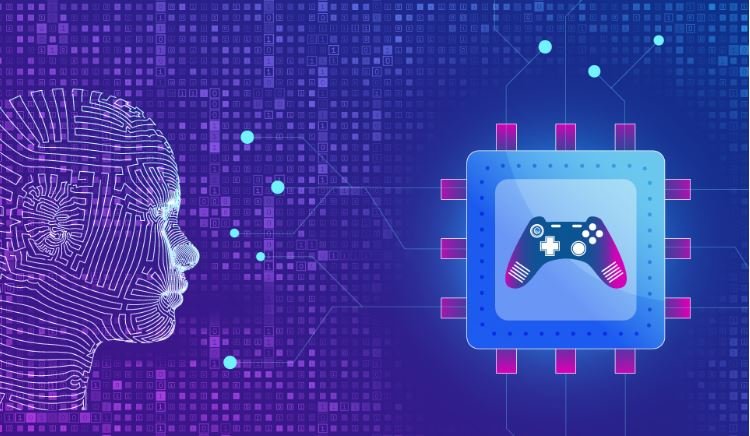Artificial intelligence
How AI is Transforming The Gaming Sectors in USA?

When we look at the history of gaming, we can see that it started in the 1950s when computer programs for games like chess and checkers gave components a run for their money. The first video games were pong and space war, which came out in the early 1970s and were based on two-player concepts. These games used discrete logic instead of artificial intelligence (AI), and they even gave rise to single-player concepts where game developers now have to use non-player characters to make the game more engaging.
The term “non-player character” refers to any character in a game that is not controlled by the user or player who is playing it. All other elements of the game that are not controlled by the player are also considered non-player or non-playing characters.
The need for a single player concept actually arose with the development of artificial intelligence in the gaming industry, but prior to AI’s introduction, developers used stored patterns to determine the actions of non-player characters. With the release of Pac Man developers started using artificial intelligence techniques to create more complex games with higher difficulty levels. Stored pattern, as I understand it, is basically having specific outcomes for each user input in the game.
At the time, journalists utilized the labyrinth game genre, which included enlarged air patterns introduced by Pac-Man, in addition to strategy games, etc.
What is AI for Gaming?
As gaming becomes more immersive and realistic, and as community and interaction become more important, users are increasingly looking for ways to feel connected to each other within a game. AI is a tool that many game developers are using to build those connections, deepen engagement and generate new content and interactive stories.
There are able to do this by collecting opted-in data from users and analyzing user behavior to understand how gamers play, where they are most deeply or most frequently engaged and what factors lead them to stop playing. Those insights allow developers to fine-tune gameplay and locate new opportunities for monetization. AI is also valuable for improving gameplay, not only in terms of realism in design and avatar interactivity but also suiting the gamer’s specific skill level and method of play.
Think of enemies and obstacles within a game. NPCs (non-player characters) must be trained to move around obstacles, and AI can facilitate that training. It can also facilitate better pathfinding by detecting the shortest path between two points that any characters need to traverse.
The hype around AI gaming has been continuously growing for quite a while. Just look at Cortana in Halo (yes, Microsoft named its virtual assistant after his character, and we’re so here for it!) and that’s not only the game in artificial intelligence. Several other games like (Detroit: becoming human) revolve all over the world.
Read Also: How AI is Transforming The Insurance Sector in USA?
What are Paybacks of AI in Games?
Here are some benefits of using AI in games:
Boosted Player Experience
Creating life-like situational developments to progress in the games adds excitement to the gameplay. Increasing complexity in AI games ensures gamers are hooked to the game. With the rise of different AI gaming devices, gamers expect to have immersive experience across challenge and avoid monotony.
Representative non-Player Characteristic
NPCS or non-players characters are where game AI is used the most. These are characters in the game who act intelligently as if they were controlled by human players. These characters behavior is determined by AI algorithms and that add depth & complexity to the game, making it more engaging for the players.
Intelligent Game Balancing & Testing
AI can be used to balance multi-players games, ensuring fair & enjoyable experiences for all players. AI-powered testing can simulate hundreds of gameplay scenarios, uncovering hidden bugs & optimizing game mechanism more efficiently. Game AI can figure out the ability and emotional state of the player, and then tailor the game according to that.
Cheating Exposure
AI can be used to detect cheating players. This can help to keep games fair for everyone. They do this by employing anomaly detection to identify and isolate deviating patterns. Supervised machine learning algorithms can be trained on cheating data and non-cheating data so that AI can understand the difference.
Dynamic Difficulty Adjustments
Similar to dynamic online exams where the questions adjust to the learner’s knowledge level, AI in the gaming industry can adjust a gamers difficulty based on a player’s skill level. This can help ensure that the game is challenging enough to keep it interesting, yet at the same time not frustrating. First of all, key metrics to track are identified, and tracking mechanisms are activated. For example, these could be time to complete a level, number of enemies killed, weapons used and all these etc.
Read Also: How Ai Is Transforming The Education Sector In The USA?
Transformation of Video Games
Video games have transformed from a pastime often dismissed by parents as frivolous to a thriving industry generating millions in revenue for teenagers and young adults. This sector also paves the way for advancements in AI and VR technology. Video game development integrates artistic and scientific elements of coding with disciplines like psychology, anthropology, cultural studies, and sociology.
As a result, gamers develop proficiency in unique knowledge application areas, sharpening both social and technical skills at an exceptional pace. The game development industry even birthed a new movement known as creative coding. While some sources define it solely as creating digital art through code, the gaming world expands this concept significantly.
Creative coding is actively practiced at game development conventions and incorporated in the curriculum of software engineering schools. It represents a unique blend of art, design, and scientific principles. This approach transcends conventional thinking, fostering the creation of extraordinary experiences where the physical and digital realms converge.
Read More: Fireflies AI Review: All Things You Need To Know About Fireflies
Follow Dallee for more Ai Updates and News.

-

 AI Chatbot12 months ago
AI Chatbot12 months agoJoyland AI: An In-Depth Guide to AI Storytelling and Character Creation
-

 Artificial Intelligence1 year ago
Artificial Intelligence1 year agoIs Janitor AI down? Analyzing Janitor AI’s Current Status:
-

 Artificial intelligence1 year ago
Artificial intelligence1 year agoWhat is Chain-of-Thought (CoT) Prompting: A Beginner’s Guide
-

 Ai News12 months ago
Ai News12 months agoChat GPT Login: Easy Step-By-Step Access Guide
-

 Artificial intelligence1 year ago
Artificial intelligence1 year agoBeta Character AI: Everything You Need To Know
-

 Ai News1 year ago
Ai News1 year agoGPT-5: Features, Abilities And Everything You Should Know About GPT-5
-

 Art generator12 months ago
Art generator12 months agoTop 8 Free NSFW AI ART Generators From Text Prompts
-

 Ai tools12 months ago
Ai tools12 months agoDezgo’s AI-Powered Image Generation Review: Features, Plans And Pricing



